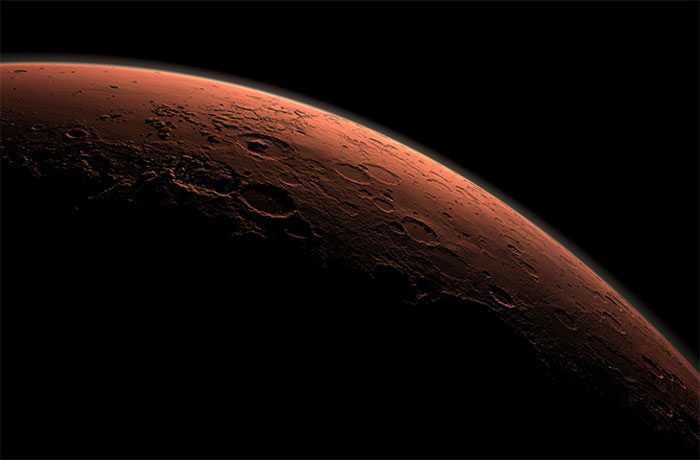.

A rain of metallic stardust lit up the skies of Mars in the wake of the close passage of Comet Siding Spring, which roared past the Red Planet last October.
This is according to the instruments aboard NASA's MAVEN spacecraft, which made the first direct detection of sodium, magnesium, aluminum, chromium, nickel, copper, zinc, iron and other metals high in the Martian atmosphere that can be linked directly to the material sloughing off the comet.
“This must have been a mind-blowing meteor shower,” said Nick Schneider of the Laboratory of Atmospheric and Space Physics at the University of Colorado.
MAVEN's instruments were put to use as soon as the spacecraft arrived -- even before the instruments were fully commissioned -- to measure the effects of the comet on the Martian atmosphere.
Based on the strong signal of magnesium and iron measurements seen by MAVEN's Imaging Ultraviolet Spectrograph, Schneider says the hourly meteor rate overhead on Mars must have been tens of thousands of “shooting stars” per hour for hours.
“I'm not sure anyone alive has ever seen that,” said Schneider, “and the closest thing in human history might the the 1833 Leonid shower.”
The metal ions were the remains of pebbles and other pieces shed from the comet that burned up, or “ablated” into individual atoms -- when they hit the Martian atmosphere at 56 kilometers per second (125,000 miles per hour). It's the same thing that happens on Earth, except that not even on Earth had a spacecraft been in the right place at the right time to detect so many ions fresh off a comet.
“This is the first time that we detect the full panel of metal ions from sodium to zinc,” said Mehdi Benna, a MAVEN researcher at the University of Maryland and NASA's Goddard Space Flight Center who works on the team that runs the Neutral Gas and Ion Mass Spectrometer (NGIMS).
That instrument captures, identifies and counts the charged metal atoms high in the ionosphere of the red planet. Only, the first measurements NGIMS did were under unprecedented and unexpected circumstances, he said.
“The nice thing about Comet Siding Spring is that we know the source of the dust particles,” said Benna. “We know the source and the speed.” These are numbers they can put into the models they use to sort out the details of such events and glean information about Mars' ionosphere, the comet's composition, and even the workings of Earth's ionosphere when it's hit by comet or asteroid debris. “Here we really have a controlled experiment. We measured ions shortly after they has deposited. If we had waited a week or even a few days we wouldn't have such a clear detection.”
Benna and Schneider are lead authors on separate papers about their respective instruments' measurements recently published online by the journal Geophysical Research Letters. One of the things that can not be found those papers, however, is the role serendipity played in the work. MAVEN was not launched with Comet Siding Spring in mind. It was just luck that the spacecraft arrived in time for the flyby with instruments that could study the event.
“If someone had said 'Go measure the elemental and isotopic composition of dust from a first-time Oort cloud comet,' any sane person would have said 'can’t be done',” said Schneider of Benna's work. “Yet that’s exactly what they did, and it should keep the cosmochemists occupied for a while!”
“The funny thing is that actually we did not plan for the spacecraft and the instrument to get that data,” said Benna. “A few months before we were told about Siding Spring and so we looked to see if we could do the measurements.” As it turned out, the NGIMS is the close brother to the instrument that was onboard the CONTOUR spacecraft which was launched in 2002 to visit and study comets. But that spacecraft never made it to any comets.
“So a very similar instrument finally got comet measurements on MAVEN,” said Benna. It's a great lesson, he said: “Never lose hope.”
Note: Independent science writer Larry O'Hanlon is also the blog manager and social media coordinator for the American Geophysical Union, which publishes Geophysical Research Letters.
Quelle:D-news
4113 Views
